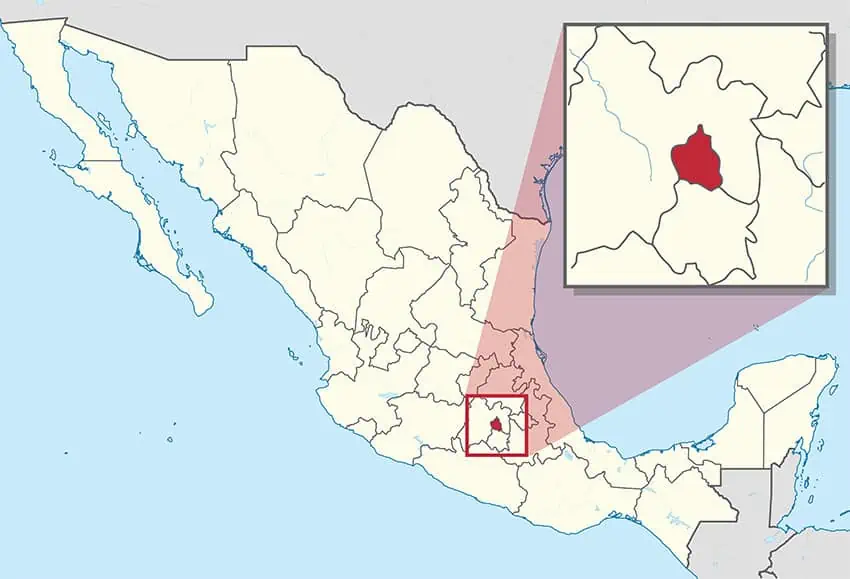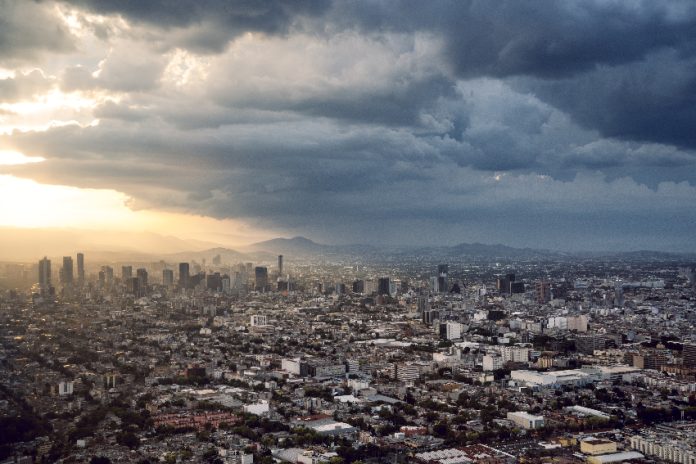Everyone knows Mexico City is massive. You might have seen the enormity of its sprawl while flying into Benito Juárez International Airport. If you’ve ridden the metro at peak hour or crammed into the Zócalo for a popular event (say the Paul McCartney concert in 2012), you’re no doubt intimately familiar with the capital’s crowdedness, which, to put it mildly, can sometimes be just too intense.
In this edition of “Mexico in Numbers” (see three others here, here and here) I’ll aim to give you an insight into some of the figures that matter when it comes to trying to make sense of the size of the Mexican megalopolis, the city formerly known as “El DF” — the Federal District — and colloquially called Chilangolandia, chilango being one of a few demonyms for Mexico City residents.
First a very brief summary of some basic history: Tenochtitlán, as Mexico City’s pre-Hispanic predecessor was called, was founded in about 1325, and was one of the largest cities in the world when it was conquered by the Spanish in the early 1520s. During the colonial period between the early 16th and early 19th centuries, Mexico City was the capital of the Viceroyalty of New Spain, before becoming the capital of an independent Mexico in the 1820s.
It was during the next century — the 20th — when the population of CDMX (the official abbreviation of the capital today) really began to explode as people seeking to improve their lot in life flooded into the city, especially from rural parts of the country. Data published by INEGI, Mexico’s statistics agency, shows that the population of the capital was just 500,000 in 1900 but had reached 3.1 million by the middle of last century, a 520% increase in the space of just 50 years. Mexico City gained another 5.5 million people in the next 50 years to finish the 20th century with a population of 8.6 million, while INEGI’s most recent census found that just over 9.2 million people called CDMX home in 2020.
About now you might be thinking, “Wait, Mexico City is way bigger than that,” and you wouldn’t exactly be wrong. The numbers above apply only to Mexico City itself — the 16 boroughs that officially make up the capital — rather than the greater Mexico City metropolitan area, which includes 56 municipalities in México state and one in Hidalgo, according to the Development Bank of Latin America.
The population of greater Mexico City, the ballpark figure you’re perhaps more familiar with, is well above 20 million, pushed up by populous municipalities in México state such as Ecatepec and Nezahualcóyotl (Ciudad Neza), both of which have more than 1 million residents.
In Mexico City proper, Iztapalapa (home to the capital’s main wholesale market) is the most populous borough with 1.8 million residents, while Gustavo A. Madero (where the Basilica of Guadalupe is located) ranks second and is the only other borough with a population above 1 million.
The total population of the 16 boroughs — the 9.2 million total is made up of 4.8 million females and 4.4 million males, 19% of whom are 15 or younger — makes the capital Mexico’s second most populous federal entity after México state, which has a population of just under 17 million. Just over 7% of the country’s 126 million residents (according to the 2020 census) live in the capital proper, but almost one in five Mexicans live in the greater metropolitan area.
Among its megalopolis peers around the world, greater CDMX ranked as the fifth largest in 2018 with a population of 21.6 million, according to a United Nations report. Only Tokyo, Delhi, Shanghai and Sao Paulo were found to be bigger.
Let’s wade further into population stats and talk density: In 2020, there was an average of 6,163 residents per square kilometer across the 1,485 km2 that make up Mexico City proper, according to INEGI.
While CDMX’s density is no match for immensely crowded cities such as Dhaka, Hong Kong and Mumbai, it is easily the most densely populated entity in Mexico. México state is the second most densely populated entity but with 760 residents per square kilometer, its density is just a fraction of that of the capital.
Where do all these chilangos (people who have moved into the capital from elsewhere) and capitalinos (Mexico City-born residents) live? In 2.75 million dwellings spread across the 16 boroughs, according to INEGI, meaning that an average of about 3.3 people live in each home.
How do they get around? Many drive, according to official data, which shows that there are 5.8 million cars in greater Mexico City, and approximately 4.8 million of them are on the streets on any given day. Another option residents have is to take public transport, and while there are various modes including buses, shared vans, light rail, cable car and the suburban rail system, the mainly underground metro system is undoubtedly king.

The Mexico City Metro, which opened in 1969 with a single line, runs through 11 of the 16 boroughs and even reaches a few México state municipalities. It has a total of 163 stations along 12 lines and ranks as the ninth busiest metro system in the world in terms of annual ridership, with over 1.6 billion trips taken in 2019.
The numbers that could be cited to help illustrate the immensity, complexity and diversity of Mexico City are virtually endless (like the urban sprawl), but to avoid this piece growing haphazardly like a shanty town, here are just five more CDMX stats to ponder.
- At 2,240 meters above sea level, Mexico City is the world’s eighth highest capital.
- Approximately 13,149 tonnes of trash are collected on a daily basis in the 16 boroughs, government data shows.
- Mexico City has 171 museums, a figure that some reports claim is the highest total for a city after London, although these stats indicate otherwise.
- There are more than 1,800 distinct neighborhoods in the 16 boroughs, according to data published by the Chilango magazine.
- Finally, and perhaps most importantly — especially if you’re in the capital and hungry — 95% of residents live within 400 meters of a taco stand, according to a 2021 study completed by a geographer from the National Autonomous University.
